Par Nicolas Bonnal
Source nicolasbonnal.wordpress.com
L’effondrement de nos libertés accompagne notre déclin intellectuel moral, militaire, économique. Nous ne sommes bons qu’à détruire les restes de notre civilisation. Il n’y a plus de socialisme, plus de capitalisme, juste un système infect – un ultra-capitalisme bonimenteur et gaspilleur – bon à creuser des dettes immondes pour remplacer ses populations et saccager des vies. Notre hyper-apocalypse n’offre même pas la grandeur épique dont nous eussions rêvé en des temps plus reculés. C’est un environnement crade qui se contente de ruiner la qualité de la vie tout en doublant le prix de tout à chaque instant.
Il faudra écrire un livre sur le rôle de la technologie, arrogante, puérile, envahissante, dans le déclin de la civilisation technicienne occidentale. Déclin des transports, du nucléaire, de la construction, de la pharmacie, de l’espace, de l’alimentation… Depuis les années 70, la technologie américaine infantilise d’un côté (les jeux, « l’information ») et de l’autre elle rend vicieuse des élites qui copient les investisseurs qui ont remplacé l’industrie par l’agiotage. La technologie a tué le cinéma dont les effets spéciaux sont devenus ridicules, comme ceux des Marvel-Mossad comics. Et ce n’est pas avec des sabres laser que nos zélés infantilisés mettront au pas russes, iraniens, chinois ; déjà qu’on pleurniche avec le Yémen ou le Hezbollah…
Il faut évoquer les deux historiens impériaux Samuel Huntington et Victor Davis Hanson. Car on assiste à la fin du « monopole de la violence » occidentale, de sa « culture du carnage » qu’Hanson fait remonter aux guerres médiques. Mais Hanson oublie la victoire des Parthes contre Crassus (lisez sa vie par Plutarque) et la chance historique contre les mongols qui firent demi-tour (Batu khan) pour des raisons familiales avant de raser de près le petit cap asiatique. Quant à Huntington toujours mal lu, il affirmait que l’occident s’était imposé par sa violence organisée (« superiority in applying organized violence »), pas par la supériorité ontologique de sa civilisation…
Fred Reed s’est magnifiquement défoulé sur unz.com, alors on va le laisser parler. Fred Reed rappelle sa carrière :
Pendant quelques décennies, j’ai couvert les questions militaires pour diverses publications, comme le Washington Times et Harper’s, et j’ai tenu une chronique militaire pour le Universal Press Syndicate. Je suivais le principe bien connu des journalistes avisés : « Ne demandez pas ce que vous pouvez faire pour le journalisme, mais ce que le journalisme peut faire pour vous. » Vivre au rythme militaire était un excellent passe-temps, permettant de voler dans des avions de combat et de naviguer dans des sous-marins. Mais si vous prenez l’étude au sérieux, comme je l’ai fait, vous apprenez des choses intéressantes. Comme par exemple le fait qu’une guerre contre un « vrai » pays, comme la Russie, la Chine ou même l’Iran, serait une aventure insensée.
Reed évoque la sinistre fonction de l’armée US :
Les armées inutilisées se détériorent. La flotte américaine n’est plus entrée en guerre depuis 1945, ni l’armée de l’air depuis 1975, ni l’infanterie dans une vraie guerre depuis le Vietnam. Le bombardement de paysans sans défense, la principale fonction de l’armée américaine, n’est pas la guerre.
Sur la conscription, Reed souligne une débandade morale :
Les États-Unis ne peuvent pas mener une grande guerre terrestre, comme par exemple contre la Russie, la Chine ou l’Iran. Une telle guerre nécessiterait de recourir à la conscription. Le public ne l’accepterait pas. Les États-Unis ne jouissent plus du genre d’unité patriotique qu’ils avaient au début de la guerre contre le Vietnam. De lourdes pertes seraient intolérables. Les gens d’aujourd’hui sont beaucoup plus disposés à désobéir au gouvernement fédéral. Notez que de nombreux États ont légalisé le cannabis au mépris de la loi fédérale et que de nombreuses juridictions du pays refusent tout simplement d’aider les autorités fédérales en matière de lois sur l’immigration. Toute tentative d’envoyer des femmelettes au combat entraînerait une désobéissance civile généralisée.

Sur la marine US devenue invalide, il dit :
Un porte-avion est une vessie de carburéacteur enrobant de puissants explosifs. Les implications sont considérables. Un missile balistique hypersonique plongeant, guidé en phase terminale, perforant le poste de pilotage et explosant dans le pont du hangar, enverrait n’importe lequel d’entre eux dans les chantiers de réparation pour une année. Les Russes et les Chinois développent ou ont déjà mis au point des missiles spécifiquement conçus pour éliminer ces porte-avions. Notez que la portée de certains de ces missiles est beaucoup plus grande que le rayon de combat leurs avions. Oups.
Pour Reed, le soldat US devient une poule mouillée :
Jusqu’au Vietnam, les guerres américaines ont été menées par des jeunes hommes coriaces, souvent issus de milieux ruraux, connaissant bien les armes à feu et le travail physique pénible. Je le sais bien, ayant grandi et ayant servi avec eux dans la marine. La discipline, si elle n’est pas vraiment brutale, était très stricte. Les exigences physiques étaient élevées. En AIT (entraînement avancé d’infanterie), au Camp Lejeune, c’était «La compagnie S sur la route ! » à 3h30 du matin, suivie d’une course à pied et d’un entraînement intensif aux armes jusqu’à minuit. Oui, les vieux aiment se rappeler comment c’était à l’époque, mais c’était vraiment comme ça.
Aujourd’hui, l’Amérique a une armée corrompue par une politique de justice sociale. Les recrues ne sont plus taillés comme des bûcherons. L’obésité est commune. Le Pentagone a abaissé ses standards physiques, caché les problèmes raciaux, assoupli son entraînement. Les officiers ont peur du nombre grandissant de femmes militaires au sein des unités de combat. Une plainte pour sexisme et c’en est fini de votre carrière.
Trait important, il y a le pourrissement du corps des officiers :
En temps de paix prolongée, le corps des officiers se désintègre. Tous les officiers du second tour sont des politiciens, surtout au-dessus du lieutenant-colonel. On ne bénéficie pas de promotion en suggérant que les hauts gradés mentent pour des raisons politiques, mais en insistant sur le fait que la guerre en Afghanistan est en train d’être gagnée. Le temps de paix encourage les carriéristes qui avancent en ne faisant pas de vagues. Dans une grande guerre, de tels généraux d’éclat n’ayant fait le coup de feu que sur PowerPoint doivent être éliminés à un coût élevé en vies humaines.
L’armée d’aujourd’hui ne fera rien de bon dans un combat égal contre des Afghans, des Russes ou des Iraniens. L’armée américaine n’a pas réussi à vaincre les villageois afghans en dix-huit ans avec un immense avantage en termes de puissance aérienne, de cuirassés, de blindés, d’artillerie, de soins médicaux et d’équipement. Que pensez-vous qu’il arriverait s’ils devaient combattre les Talibans sur un pied d’égalité : sandales, fusils, lance-roquettes et pas grand-chose d’autre ?
Incompétence et corruption sont la norme :
Pourquoi donc construire ces armes ? Parce que Northrop-Grumman a tellement d’argent que ses lobbyistes utilisent des pelles à neige pour remplir les poches des membres du Congrès. À l’époque où je couvrais le Pentagone, chaque fois qu’une nouvelle arme était achetée, par exemple l’hélicoptère d’attaque AH-64, le contractant principal communiquait une liste de sous-traitants dans de nombreux États – dont les membres du Congrès soutiendraient l’arme afin d’obtenir les emplois. Tout est une question d’argent. Parfois, le Congrès oblige l’armée à acheter des armes qu’elle dit explicitement ne pas vouloir, comme un plus grand nombre de chars M1 de l’usine de Lima, dans l’Ohio. Pour les emplois.
En bref, de nombreuses armes sont achetées pour des raisons économiques et non pour une utilisation en temps de guerre. De mon temps, j’ai vu de nombreuses armes non utilisables. Le B1, B2, DIVAD, le véhicule de combat Bradley, le M16, le V-22, le LAW. Rien n’a changé.
Reed rappelle comme Philippe Grasset la nullité des nouveaux équipements :
Mais nous avons maintenant le F-35, le dernier chasseur à tout faire aux coûts grotesques. On dirait un coucou mal conçu et souffrant de problèmes infinis. Selon la presse technique, il s’agit d’une reine de hangar ayant des taux de sortie très bas, une préparation médiocre et nécessitant une maintenance électronique complexe, souvent à des échelons distants.

Alors l’efficacité est remplacée par la folie :
Supposons que Bolton [ou Pompeo] obtienne sa guerre contre l’Iran. Les conseillers lui disent qu’elle sera brève et facile, chirurgicale, une promenade de santé. Avons-nous déjà entendu cela ? La Marine affirmé qu’elle peut garder le détroit d’Ormuz ouvert, grrr, waf ! Mais s’il se trouve que l’Iran ne suit pas le scénario, ne se rend pas. Et que la marine, à sa grande surprise, ne trouve pas les missiles anti-navires profondément enterrés et transportés par camion qui continuent de frapper les pétroliers. Ceux-ci continuent à brûler. Bientôt, personne ne les assurera. Ils arrêtent de circuler. Trois semaines après le début de la guerre, le monde réclame du pétrole à grands cris, il n’y a pas de fin en vue, Trump ne peut admettre qu’il a fait une gaffe, et Bolton [ou Pompeo] veut lancer une bombe nucléaire contre Téhéran.
Ou Washington pousse trop fort dans la mer de Chine méridionale, une collision accidentelle se transforme en un échange de tirs, et les Bannonites Pompeo-Boltoniens ordonnent à la flotte de donner une leçon aux Chinetoques. Malheureusement, les missiles anti-navires chinois s’avèrent plutôt meilleurs que prévu, un porte-avion est détruit et trois destroyers transformés en tas de ferraille.
Que fait-on maintenant ? Les egos surdimensionnés et mal informés à Washington ne peuvent accepter la défaite. D’une part, cela mettrait fin à la crédibilité américaine en tant que puissance hégémonique, et tout le monde voudra acheter des missiles anti-navires chinois. La vanité joue un plus grand rôle dans les affaires mondiales que ne le disent les manuels. Washington, bêtement mais inévitablement, irait dans la surenchère et commencerait une guerre totale contre la Chine. À ce stade, les choses deviendraient imprévisibles.
Puis Reed rappelle que la guerre nucléaire envisagée par l’ahuri que le Donald a mis à la place du regretté Bolton n’est pas gagnable :
Les hommes d’une stupidité incalculable et d’une insuffisance sexuelle probable parlent d’une guerre nucléaire comme gagnable. Ils peuvent toujours rêver. Réfléchissez : les villes américaines ne peuvent pas se nourrir elles-mêmes. Trois jours sans envois de nourriture et les New-yorkais auront vidé les rayons des supermarchés. Une semaine et ils tueraient pour des conserves de thon. Deux semaines et ils se mangeraient les uns les autres. Un très petit nombre de bombes nucléaires sur les centres de transport empêcherait la distribution de nourriture pendant des mois. Même un plus petit nombre encore de bombes au cobalt, conçues pour produire un maximum de radiations persistantes, rendraient les zones fermières mortellement radioactives pour une décennie.
Les «intellectuels de la Défense», généralement tellement stupides qu’ils devraient vivre dans des arbres, discutent de la domination par l’escalade, du facteur d’intimidation et de la défense antimissile imperméable. Ils sont complètement fous. Ce dont ils ont vraiment besoin, c’est d’une coquille et d’un abonnement à Pornhub Premium.
Et Reed de conclure :
C’est la raison pour laquelle c’est vraiment une très mauvaise idée d’avoir un dingue psychopathe, deux chrétiens fanatiques et un fils-à-papa pathologiquement agressif en mesure de déclencher une guerre.
On a compris qu’il ne reste à ces élites technophiles infantiles, que le fanatisme théologique et messianique pour justifier le rôle princier que les hallucinés indices boursiers leur concèdent encore.
Il faudra le mettre au pas cet occident. Il lui reste son marché, ses dollars, ses marottes écolos ou humanitaires. Mais sa manière de s’auto-halluciner, un peu comme un dealer qui succombe à sa dope, le rend de plus en plus inopérant.





 del.icio.us
del.icio.us
 Digg
Digg




 L’interprétation de la French theory par la CIA devrait nous faire réfléchir, dans ce cas, à reconsidérer le vernis radical chic qui a accompagné en grande partie sa réception anglophone. Selon une conception étapiste d’une histoire progressiste (généralement aveugle à sa téléologie implicite), l’œuvre de figures comme Foucault, Derrida et d’autres théoriciens français d’avant-garde est souvent intuitivement associée à une forme de critique radicale et sophistiquée qui dépasse sans doute de loin tout ce que l’on trouve dans les traditions socialistes, marxistes ou anarchistes. Il est certainement vrai, et mérite d’être souligné que la réception anglophone de la French theory, comme John McCumber l’a souligné à juste titre, a eu d’importantes implications politiques en tant que pôle de résistance aux fausses neutralités politiques, aux formalismes techniques rassurants de la logique et du langage, ou au conformisme idéologique direct opérant dans la tradition philosophique anglo-américaine et soutenu par McCarthy. Cependant, les pratiques théoriques des philosophes qui ont tourné le dos à ce que
L’interprétation de la French theory par la CIA devrait nous faire réfléchir, dans ce cas, à reconsidérer le vernis radical chic qui a accompagné en grande partie sa réception anglophone. Selon une conception étapiste d’une histoire progressiste (généralement aveugle à sa téléologie implicite), l’œuvre de figures comme Foucault, Derrida et d’autres théoriciens français d’avant-garde est souvent intuitivement associée à une forme de critique radicale et sophistiquée qui dépasse sans doute de loin tout ce que l’on trouve dans les traditions socialistes, marxistes ou anarchistes. Il est certainement vrai, et mérite d’être souligné que la réception anglophone de la French theory, comme John McCumber l’a souligné à juste titre, a eu d’importantes implications politiques en tant que pôle de résistance aux fausses neutralités politiques, aux formalismes techniques rassurants de la logique et du langage, ou au conformisme idéologique direct opérant dans la tradition philosophique anglo-américaine et soutenu par McCarthy. Cependant, les pratiques théoriques des philosophes qui ont tourné le dos à ce que 

 However, Stoddard departed from Grant in meaningful ways and, while some of Grant’s work is commendable, Stoddard’s deviations from it are almost uniformly for the better. In
However, Stoddard departed from Grant in meaningful ways and, while some of Grant’s work is commendable, Stoddard’s deviations from it are almost uniformly for the better. In  Stoddard foresaw that capitalism would encourage the importation of non-white labor that would outcompete whites not in its quality, but in its quantity and its willingness to work for practically nothing. This willingness is owed to the fact that, given the Malthusian pressures triggered by the overpopulation of their nations, even the most meager subsistence would be preferable from their perspective. Needless to say, this prediction has been made manifest in the United States, the United Kingdom, Germany, and elsewhere. Stoddard predicted that the Islamic Revival would bring the Muslim world into war against the West and that black Africans would align with Muslims in this effort. Stoddard predicted that internecine rivalries between non-whites would be put aside in favor of a sort-of rainbow coalition that would persist up until the moment that the white world had been defeated. He also predicted that the moral grandstanding about national self-determination during and after the First World War would make continued maintenance of the massive European colonial empires an impossibility. This seems obvious in retrospect – the values codified at Versailles both incentivized the creation of nationalist movements across the European colonies and made the ruling position blatantly and indefensibly hypocritical – but it must not have been to the contemporary British and French ruling class, who made efforts (with varying degrees of intensity) to cling to their empires into the 1960s. He predicted that the Bolsheviks would persuade discontented colored nationalists to the cause of Communism. He predicted that Japan would challenge the West for hegemony over Asia – another accurate prediction, although its impressiveness is mitigated by the fact that this was already a widespread belief following the Russo-Japanese War of 1904-05. He also presaged Samuel Huntington by prophesying that the struggle between various races and cultures, rather than Marxist materialist concerns, would be the primary cause of conflict and consciousness in the twentieth century and beyond.
Stoddard foresaw that capitalism would encourage the importation of non-white labor that would outcompete whites not in its quality, but in its quantity and its willingness to work for practically nothing. This willingness is owed to the fact that, given the Malthusian pressures triggered by the overpopulation of their nations, even the most meager subsistence would be preferable from their perspective. Needless to say, this prediction has been made manifest in the United States, the United Kingdom, Germany, and elsewhere. Stoddard predicted that the Islamic Revival would bring the Muslim world into war against the West and that black Africans would align with Muslims in this effort. Stoddard predicted that internecine rivalries between non-whites would be put aside in favor of a sort-of rainbow coalition that would persist up until the moment that the white world had been defeated. He also predicted that the moral grandstanding about national self-determination during and after the First World War would make continued maintenance of the massive European colonial empires an impossibility. This seems obvious in retrospect – the values codified at Versailles both incentivized the creation of nationalist movements across the European colonies and made the ruling position blatantly and indefensibly hypocritical – but it must not have been to the contemporary British and French ruling class, who made efforts (with varying degrees of intensity) to cling to their empires into the 1960s. He predicted that the Bolsheviks would persuade discontented colored nationalists to the cause of Communism. He predicted that Japan would challenge the West for hegemony over Asia – another accurate prediction, although its impressiveness is mitigated by the fact that this was already a widespread belief following the Russo-Japanese War of 1904-05. He also presaged Samuel Huntington by prophesying that the struggle between various races and cultures, rather than Marxist materialist concerns, would be the primary cause of conflict and consciousness in the twentieth century and beyond. Today, the unfortunate veracity of Stoddard’s predictions has reignited interest in his scholarship, sympathetically in dissident circles and, of course, negatively in the establishment. The similarity of his predictions to the “Great Replacement” which we observe today will not be lost on any conscious reader. It is safe to say that this is the reason that Stoddard has recently begun reappearing in Leftist publications.
Today, the unfortunate veracity of Stoddard’s predictions has reignited interest in his scholarship, sympathetically in dissident circles and, of course, negatively in the establishment. The similarity of his predictions to the “Great Replacement” which we observe today will not be lost on any conscious reader. It is safe to say that this is the reason that Stoddard has recently begun reappearing in Leftist publications.  The central question of the debate was “Shall the Negro Be Encouraged to Seek Cultural Equality?,” a concept which had never been relevant to Stoddard’s research but was the entire raison d’etre for Du Bois’ career. Moreover, the framing of the question was such that, even at the time, it would have been impossible to make a cogent argument against it. The contrary position, that whites should actively discourage blacks from bettering themselves, would not have been how segregationists presented their position. And, of course, Du Bois was not asking for whites to “encourage” blacks to “seek” their own achievements – that was the position of Booker T. Washington, his hated nemesis. Du Bois’ goal was to dissolve white institutions, or at least inject blacks into them, and to accomplish a Marxist redistribution of wealth along racial lines.
The central question of the debate was “Shall the Negro Be Encouraged to Seek Cultural Equality?,” a concept which had never been relevant to Stoddard’s research but was the entire raison d’etre for Du Bois’ career. Moreover, the framing of the question was such that, even at the time, it would have been impossible to make a cogent argument against it. The contrary position, that whites should actively discourage blacks from bettering themselves, would not have been how segregationists presented their position. And, of course, Du Bois was not asking for whites to “encourage” blacks to “seek” their own achievements – that was the position of Booker T. Washington, his hated nemesis. Du Bois’ goal was to dissolve white institutions, or at least inject blacks into them, and to accomplish a Marxist redistribution of wealth along racial lines.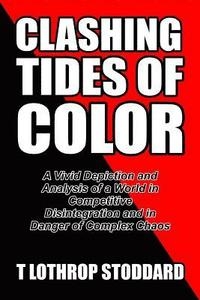 Stoddard says that “the more enlightened men of southern white America” are trying to ensure that, while the races are kept separate, that the facilities to which they have access are nonetheless equal in quality. This elicited laughter from the black audience, who found the claim to be ridiculous. Stoddard then informed them that he did not see the joke, apparently eliciting more whooping. Angered, Stoddard rebutted that bi-racial cooperation of the Atlanta Compromise mold was making more progress than anything Du Bois was attempting – another apt prediction, for Du Bois died having accomplished none of his goals. Du Bois gave up on “progress” in the US and eventually moved to observe and admire Mao Zedong’s brutality in China before settling in Ghana. His NAACP was and remains little more than a debating and protesting society. From its inception in 1909, the NAACP incessantly complained for over fifty years until other acronymous black organizations, aided by the bayonets of the National Guard and the Cold War exigencies of “winning hearts and minds,” ended the white near-monopoly on American political power.
Stoddard says that “the more enlightened men of southern white America” are trying to ensure that, while the races are kept separate, that the facilities to which they have access are nonetheless equal in quality. This elicited laughter from the black audience, who found the claim to be ridiculous. Stoddard then informed them that he did not see the joke, apparently eliciting more whooping. Angered, Stoddard rebutted that bi-racial cooperation of the Atlanta Compromise mold was making more progress than anything Du Bois was attempting – another apt prediction, for Du Bois died having accomplished none of his goals. Du Bois gave up on “progress” in the US and eventually moved to observe and admire Mao Zedong’s brutality in China before settling in Ghana. His NAACP was and remains little more than a debating and protesting society. From its inception in 1909, the NAACP incessantly complained for over fifty years until other acronymous black organizations, aided by the bayonets of the National Guard and the Cold War exigencies of “winning hearts and minds,” ended the white near-monopoly on American political power.


 And so, when Molotov went to Paris to meet the British and French foreign ministers at a preliminary conference on the Marshall Plan (this is still June 1947), he told them he believed the proposed Plan was really conceived in America’s own interest, “to enlarge their foreign markets, especially in view of the approaching crisis.” To no one’s great surprise, Molotov soon announced that neither the USSR nor any of the Communist satellite states would be participating in the European Recovery Plan.
And so, when Molotov went to Paris to meet the British and French foreign ministers at a preliminary conference on the Marshall Plan (this is still June 1947), he told them he believed the proposed Plan was really conceived in America’s own interest, “to enlarge their foreign markets, especially in view of the approaching crisis.” To no one’s great surprise, Molotov soon announced that neither the USSR nor any of the Communist satellite states would be participating in the European Recovery Plan. This tortured, unnecessary explanation ties up nicely with the alternative predictions Orwell offers in his Partisan Review article. As I said, he doesn’t really say much about socialism, and he doubts European unity, but he puts an awful lot of (overly) complex thought into how it’s all going to end. He’s writing this while he’s mainly focused on Nineteen Eighty-Four, so we end up with three James Burnham-esque scenarios of what may face us when the bombs start a-flying:
This tortured, unnecessary explanation ties up nicely with the alternative predictions Orwell offers in his Partisan Review article. As I said, he doesn’t really say much about socialism, and he doubts European unity, but he puts an awful lot of (overly) complex thought into how it’s all going to end. He’s writing this while he’s mainly focused on Nineteen Eighty-Four, so we end up with three James Burnham-esque scenarios of what may face us when the bombs start a-flying:



 Ce patron monde de la division chaudière d’Alstom basé à Singapour est arrêté par le FBI dès l’arrivée de son avion de ligne à New York, le 14 avril 2013. Accusé de corruption d’élus indonésiens afin d’obtenir la construction d’une centrale électrique à Tarahan sur l’île de Sumatra, il pâtit du Foreign Corrupt Practices Act (FCPA), une loi qui permet depuis 1977 aux autorités étatsuniennes et en particulier au ministère fédéral de la Justice – ou DOJ (Department of Justice) – de poursuivre n’importe qui n’importe où pour n’importe quoi. En 1998, le Congrès lui a conféré une valeur d’extraterritorialité. Cette loi dispose en outre des effets pernicieux du Patriot Act, de l’espionnage numérique généralisé orchestré par la NSA et encourage le FBI à placer au sein même des compagnies étrangères suspectées, souvent en concurrence féroce avec des firmes yankees, un mouchard infiltré prêt à tout balancer, puis une fois les entreprises condamnées, un « monitor », c’est-à-dire « un contrôleur qui rapporte au DOJ durant une période de trois ans (p. 80) ». Cette inacceptable ingérence résulte d’une conception hégémonique des activités économiques étatsuniennes. « Les autorités américaines considèrent que le moindre lien avec les États-Unis, cotation en bourse, échanges commerciaux en dollars, utilisation d’une boîte mail américaine, les autorise à agir (p. 77). » Le FCPA constitue donc une arme redoutable de la guerre économique et juridique que mène Washington au reste du monde. Par exemple, si le DOJ s’attaque aux sociétés pharmaceutiques, c’est parce qu’il considère les médecins étrangers comme des agents publics exerçant une délégation de service public !
Ce patron monde de la division chaudière d’Alstom basé à Singapour est arrêté par le FBI dès l’arrivée de son avion de ligne à New York, le 14 avril 2013. Accusé de corruption d’élus indonésiens afin d’obtenir la construction d’une centrale électrique à Tarahan sur l’île de Sumatra, il pâtit du Foreign Corrupt Practices Act (FCPA), une loi qui permet depuis 1977 aux autorités étatsuniennes et en particulier au ministère fédéral de la Justice – ou DOJ (Department of Justice) – de poursuivre n’importe qui n’importe où pour n’importe quoi. En 1998, le Congrès lui a conféré une valeur d’extraterritorialité. Cette loi dispose en outre des effets pernicieux du Patriot Act, de l’espionnage numérique généralisé orchestré par la NSA et encourage le FBI à placer au sein même des compagnies étrangères suspectées, souvent en concurrence féroce avec des firmes yankees, un mouchard infiltré prêt à tout balancer, puis une fois les entreprises condamnées, un « monitor », c’est-à-dire « un contrôleur qui rapporte au DOJ durant une période de trois ans (p. 80) ». Cette inacceptable ingérence résulte d’une conception hégémonique des activités économiques étatsuniennes. « Les autorités américaines considèrent que le moindre lien avec les États-Unis, cotation en bourse, échanges commerciaux en dollars, utilisation d’une boîte mail américaine, les autorise à agir (p. 77). » Le FCPA constitue donc une arme redoutable de la guerre économique et juridique que mène Washington au reste du monde. Par exemple, si le DOJ s’attaque aux sociétés pharmaceutiques, c’est parce qu’il considère les médecins étrangers comme des agents publics exerçant une délégation de service public !


 LE FIGARO. -
LE FIGARO. - 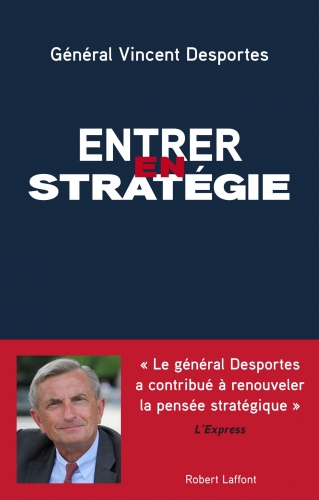 Pourtant, les pays de l'Est, notamment la Pologne, ne jurent toujours que par elle...
Pourtant, les pays de l'Est, notamment la Pologne, ne jurent toujours que par elle...



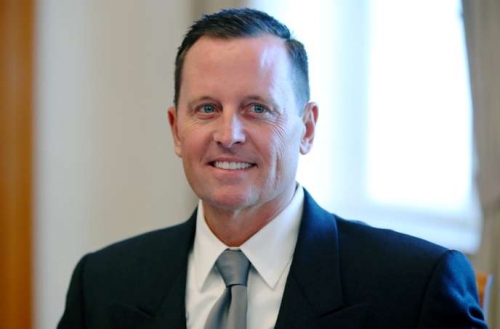

 Robert Kagan, leader d’opinion néoconservateur des Etats-Unis, époux de Victoria Nuland (co-responsable du coup d’Etat de 2014 en Ukraine) et membre du Council on Foreign Relations, a publié dans le mensuel Foreign Affairs d’avril 2019 un article sur l’Allemagne, l’UE et les Etats-Unis. Le titre: «The New German Question. What Happens When Europe Comes Apart?» [La nouvelle question allemande. Que se passe-t-il lorsque l’Europe quitte le droit chemin?]. Le raisonnement se base sur les constructions suivantes: la création du Reich allemand en 1871 a créé au centre de l’Europe un foyer à troubles trop puissants, plongeant l’Europe et le monde dans deux guerres mondiales. Après 1945, il fut possible de stabiliser ce foyer à troubles – grâce à la garantie sécuritaire américaine pour l’Europe et à la politique européenne des Etats-Unis, grâce au système de libre-échange international dirigé par les Américains, grâce à une vague démocratique en Europe émanant des Etats-Unis et, notamment aussi, grâce à la lutte contre le nationalisme européen des USA, de l’UE et de ses organisations précédentes. Selon Kagan, dans la situation actuelle, tout cela n’est plus garanti et suscite donc de vives inquiétudes – notamment en prenant en compte l’Allemagne future.
Robert Kagan, leader d’opinion néoconservateur des Etats-Unis, époux de Victoria Nuland (co-responsable du coup d’Etat de 2014 en Ukraine) et membre du Council on Foreign Relations, a publié dans le mensuel Foreign Affairs d’avril 2019 un article sur l’Allemagne, l’UE et les Etats-Unis. Le titre: «The New German Question. What Happens When Europe Comes Apart?» [La nouvelle question allemande. Que se passe-t-il lorsque l’Europe quitte le droit chemin?]. Le raisonnement se base sur les constructions suivantes: la création du Reich allemand en 1871 a créé au centre de l’Europe un foyer à troubles trop puissants, plongeant l’Europe et le monde dans deux guerres mondiales. Après 1945, il fut possible de stabiliser ce foyer à troubles – grâce à la garantie sécuritaire américaine pour l’Europe et à la politique européenne des Etats-Unis, grâce au système de libre-échange international dirigé par les Américains, grâce à une vague démocratique en Europe émanant des Etats-Unis et, notamment aussi, grâce à la lutte contre le nationalisme européen des USA, de l’UE et de ses organisations précédentes. Selon Kagan, dans la situation actuelle, tout cela n’est plus garanti et suscite donc de vives inquiétudes – notamment en prenant en compte l’Allemagne future. L’incendie de «Notre-Dame» a déclenché un engouement …
L’incendie de «Notre-Dame» a déclenché un engouement …

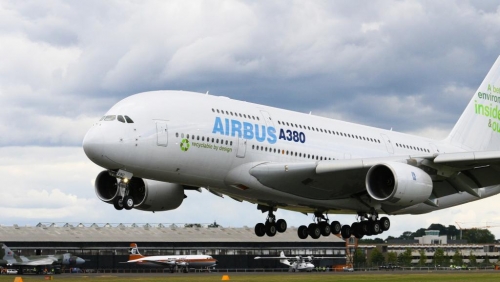

 Essayons de donner la réponse, en partant de la théorie de l’ethnogenèse de L.N. Gumiliev [1]. Cette théorie, avant tout, permet d’échapper à ce que Gumiliev lui-même a appelé « l’aberration de la proximité », lorsque « face à face, la face n’est pas vue ». Chacun peut tenter l’expérience : mettez la paume de la main très près du visage – elle semblera plus grande que l’armoire de l’expérimentateur à cinq mètres de là. Si un homme ne connaît pas le concept de la perspective, il y croira toujours. Dans la vie quotidienne, l’erreur est évidente. Mais lorsqu’il s’agit de comprendre des événements modernes avec une perspective vraiment historique, sans une vision objective prenant en compte la régularité de la montée et de la chute des civilisations et des peuples, nous ne pouvons pas l’éviter.
Essayons de donner la réponse, en partant de la théorie de l’ethnogenèse de L.N. Gumiliev [1]. Cette théorie, avant tout, permet d’échapper à ce que Gumiliev lui-même a appelé « l’aberration de la proximité », lorsque « face à face, la face n’est pas vue ». Chacun peut tenter l’expérience : mettez la paume de la main très près du visage – elle semblera plus grande que l’armoire de l’expérimentateur à cinq mètres de là. Si un homme ne connaît pas le concept de la perspective, il y croira toujours. Dans la vie quotidienne, l’erreur est évidente. Mais lorsqu’il s’agit de comprendre des événements modernes avec une perspective vraiment historique, sans une vision objective prenant en compte la régularité de la montée et de la chute des civilisations et des peuples, nous ne pouvons pas l’éviter.

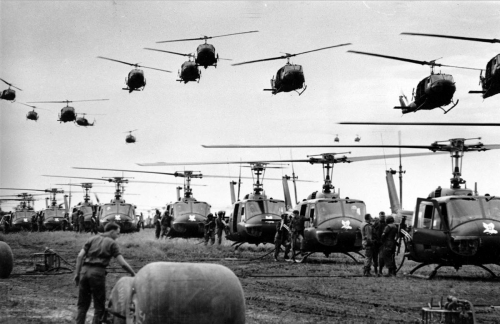




 It may be Nock’s “
It may be Nock’s “


 Je lis Michael Snyder et son blog apocalyptique depuis des années et je fais donc attention chaque fois qu’à la télévision on montre des images de la vie quotidienne en Amérique. Or de petits films sur mes espagnols à travers le monde démontrent qu’effectivement les conditions de vie aux USA sont devenues sinistres et hors de prix, sans qu’on puisse évoquer la poétique de Blade runner…Plusieurs amis fortunés qui font aussi des allers et retours et m’ont confirmé que le vieil oncle Sam coûte bien cher, comme Paris, Londres et des milliers d’endroits (même se loger en Bolivie devient un exploit, vive Morales-Bolivar-Chavez…), pour ce qu’il offre ; d’autres amis moins fortunés, universitaires, survivent durement. Car il y a en plus les persécutions politiques qui gagent nos si bienveillantes démocraties…
Je lis Michael Snyder et son blog apocalyptique depuis des années et je fais donc attention chaque fois qu’à la télévision on montre des images de la vie quotidienne en Amérique. Or de petits films sur mes espagnols à travers le monde démontrent qu’effectivement les conditions de vie aux USA sont devenues sinistres et hors de prix, sans qu’on puisse évoquer la poétique de Blade runner…Plusieurs amis fortunés qui font aussi des allers et retours et m’ont confirmé que le vieil oncle Sam coûte bien cher, comme Paris, Londres et des milliers d’endroits (même se loger en Bolivie devient un exploit, vive Morales-Bolivar-Chavez…), pour ce qu’il offre ; d’autres amis moins fortunés, universitaires, survivent durement. Car il y a en plus les persécutions politiques qui gagent nos si bienveillantes démocraties… En vérité les gens supporteraient tout (« l’homme s’habitue à tout », dixit Dostoïevski dans la maison des morts), mais le problème est que cette m… au quotidien est hors de prix ! Donc…
En vérité les gens supporteraient tout (« l’homme s’habitue à tout », dixit Dostoïevski dans la maison des morts), mais le problème est que cette m… au quotidien est hors de prix ! Donc… Les impôts pleuvent comme en France :
Les impôts pleuvent comme en France :